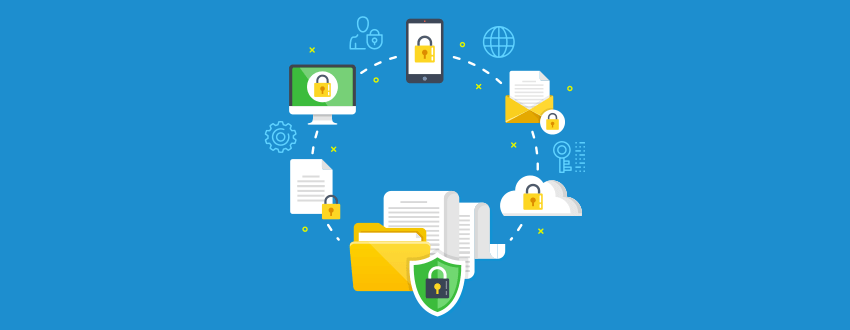
As organizations are relying heavily on the exchange of digital files to conduct business, there’s a growing concern about the security of various file transfer methods.
More companies are now using managed file transfer (MFT) software to send and receive digital files securely. Here’s what you need to know about MFT and when it’s time to implement an MFT strategy:
What’s Managed File Transfer?
MFT is an all-in-one technology that allows you to automate file transfers from a centralized dashboard. Besides encrypting and decrypting sensitive files, you can also schedule batch file transfers, create automated workflows, share files via external servers or in the cloud, and generate audit reports.
An MFT solution offers an affordable, secure, and streamlined way to ensure the security of your data in transit. It also helps increase cost efficiency as it reduces the time and labor required to execute manual file transfers and the associated custom scripting.
When It’s Time To Implement an MFT Strategy
Here are six signs that indicate your organization can benefit from an MFT solution:
1. You Need To Audit File Transfer Activities
Whether you need to provide a monthly file transfer activity report to stakeholders or troubleshoot file transfer activities, MFT software makes it easy to retrieve relevant detailed audit records for easy reporting.
Some solutions also allow you to conveniently search audit logs for specific terms, users, or date ranges, as well as examine the file transfer workflows for job log details so you can see whether each step of the process was conducted successfully.
2. You Need to Comply With Data Security Regulations
Compliance with industry regulations (e.g., HIPAA, PCI DSS, and the GDPR) is essential to any organization that processes sensitive information including health data, banking data, and personal data.
Failure to adhere to these guidelines will not only lead to hefty penalties but can also result in data breaches that could cost your company a lot of time and resources, tarnish your reputation, and cause you to lose businesses.
An MFT solution offers features you need to stay compliant with most data security regulations. These include auditing, reporting, role-based access, centralized security controls, key management, encryption, secure protocols, and more.
3. You Work With Government Agencies
If you work with the government or plan to bid for government contracts, you need to adhere to reporting and encryption requirements published by the US National Institute of Standards and Technology (NIST).
MFT software helps you meet requirements such as FIPS 140-2, AES, and Triple DES encryption algorithms while providing security authentication and user controls.
4. You Have Been Using FTP For File Transfer
If your organization still uses FTP to share files among employees and partners, it’s time to switch to MFT software. FTP doesn’t meet today’s cybersecurity standards and will create liabilities for your business if a data breach occurs.
Unlike FTP, MFT supports secure data exchange. You can use SFTP, FTPS, and HTTPS to encrypt your data and ensure that your information is secure during transit. Also, you can schedule batch transfer to improve efficiency.
5. You Need To Mitigate the Impact of Downtime
Downtime can be costly, especially if it interferes with critical file transfer processes. An MFT solution with multiple redundancies can help you maximum availability of the system. For example, by using a clustering approach with multiple servers that operate concurrently, an MFT solution can keep file transfer processes running even if one server is down.
6. You Need To Exchange Data in the Cloud
If you need to share data with partners, vendors, and customers in the cloud, an MFT solution can help you automate cloud file transfers to platforms like Microsoft Azure and Amazon Web Services with strong encryption to protect your information.
Some MFT software also integrates with popular cloud services such as Box, Salesforce, and Google Drive to help you streamline workflows while adding an extra layer of security to your file transfer process.
Wrap Up
Keeping customer data safe has become imperative for businesses to survive in today’s digital landscape. Whether one or all of the above reasons for using MFT software fits your business, securely transferring sensitive data should be at the your priority least.
This is an article provided by our partners network. It does not reflect the views or opinions of our editorial team and management.
Contributed content

Founder Dinis Guarda
IntelligentHQ Your New Business Network.
IntelligentHQ is a Business network and an expert source for finance, capital markets and intelligence for thousands of global business professionals, startups, and companies.
We exist at the point of intersection between technology, social media, finance and innovation.
IntelligentHQ leverages innovation and scale of social digital technology, analytics, news, and distribution to create an unparalleled, full digital medium and social business networks spectrum.
IntelligentHQ is working hard, to become a trusted, and indispensable source of business news and analytics, within financial services and its associated supply chains and ecosystems






























